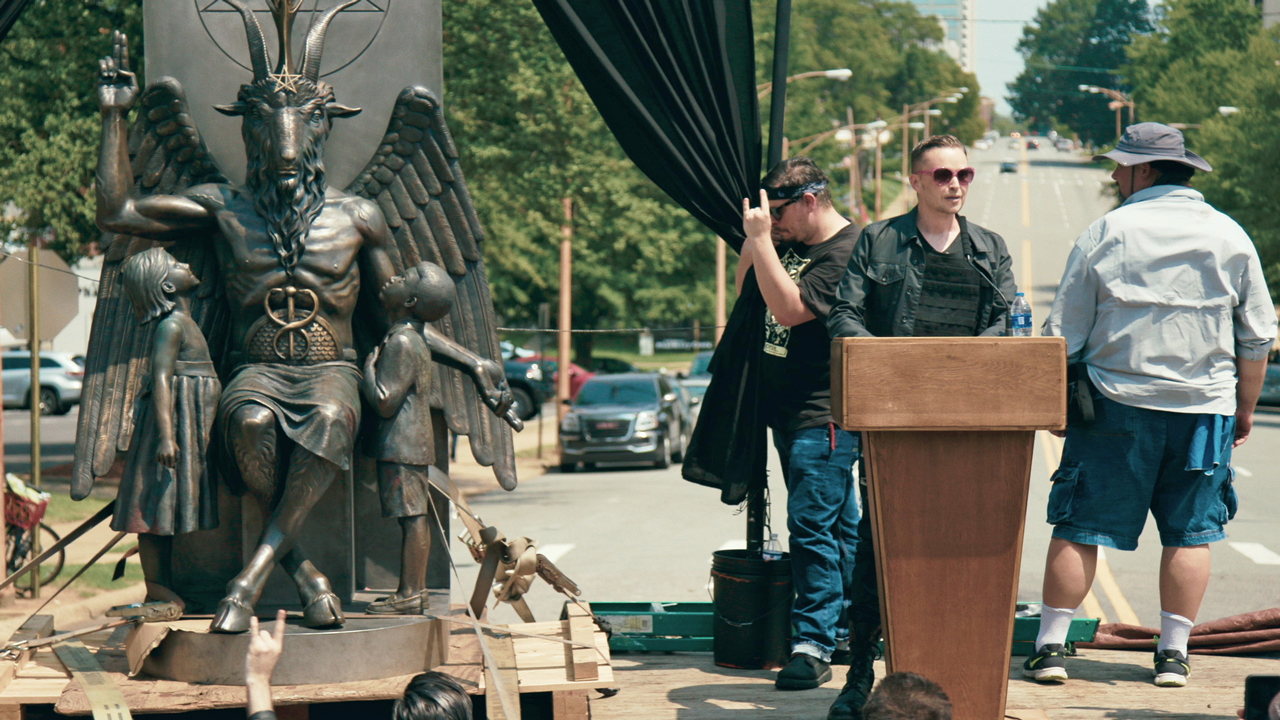From Coven, Black Sabbath, Kiss and Venom to Motley Crue, Watain and even Slipknot, the devil has inspired some of the greatest rock and metal acts. Throwing the horns is just as synonymous with metal as electric guitars, right?
But, although we metalheads might worship the music, surely we aren’t all actual Satan worshippers too? Penny Lane’s new documentary, Hail Satan?, puts forward a pretty convincing argument that we might be. Except not in the way you might think.
Penny’s film attempts to change common misconceptions on the religious movements that are based upon Anthony LaVey’s teachings of Satanism: The Church of Satan and, specifically chronicled in the film, the relatively newly established Satanic Temple (or TST).
While LaVey’s Satanism was established in the 60s, the Satanic Temple was only set up in 2013. “I saw an opportunity to witness and document a new religious movement being born right before our eyes,” explains Penny.
“And once I dove into it, I realised that Satanism is such an interesting religion, a truly modern religion and maybe the first truly modern religion. It spoke to the human condition in the 21st century in a really surprising way.”
Heretics, sceptics and outsiders never get thanked for their role in society
Penny Lane
Rather than worshipping the devil, sacrificing virgins and drinking blood, these self-proclaimed Satanists are aiming to change the world – and not in a raising-hell-on-Earth fashion, but in a truly humanist way.
Penny admits she was guilty of misunderstanding the movement herself prior to making the film, and thought that Satanists were nothing more than a myth.
“I assumed that the Satanic Temple members were not in fact Satanists, but just pretending to be in order to make a political point. The truth was, Satanism didn’t mean what I thought it meant.”
The Satanic Temple use their religion to challenge the accepted order and the stronghold that Christianity has over the United States.
Penny follows their spokesperson, Lucien Greaves, and his exploits – including TST’s bid to have a giant statue of Baphomet erected at the Oklahoma State Capitol in response to the Ten Commandments Monument being installed – as well as the general everyday activities of the religion’s do-gooders and the speed at which it has grown into a worldwide movement.

“I was very interested in the idea of elevating to a heroic status the heretics, the sceptics, the outsiders and those who refuse to just go along with the status quo,” she notes. “I think those people perform a really valuable role in a healthy society and they never get thanked for it. They mostly get hated!”
And hated they are. So why call it Satanism in the first place? Why conjure up images of evil and Devil himself? TST is a non-theistic religion, so, as the movie explains, the Satan ‘worshipped’ is the literary devil used as a metaphor – a symbol of the eternal rebel, championing personal autonomy, freedom of speech, scepticism and arbitrary authority.
Many TST members previously identified as atheists, or had doubts about their faith and how the state uses religion politically.
So what better way to challenge mainstream Christian ideologies and hypocrisy in America than to use God’s greatest adversary as your official symbol?
Just like the metal community, Satanism attracts rebels and misfits: those who aren’t interested in convention and have a wicked sense of humour to boot.
With a soundtrack curated by Converge’s Kurt Ballou and a plethora of metal band tees sported onscreen by TST members, Satanism attracts metalheads and vice versa – the two go hand in hand.
Penny thinks it’s the spirit of rebellion embodied in both – in her words, “the impulse to explore the darker and stranger and less acceptable aspects of being human. And not being too afraid to offend people… probably liking to offend people.”
Penny learned a lot on her journey with TST, not only about Satanism, but about the meaning of religion itself and why, as she puts it, “it’s awesome, or can be awesome, whereas before I had no clue about religion or why people did it and what it could possibly be good for.”
With the audience bearing witness to her discoveries, she says it can, and has, changed mainstream opinions, too.
“It’s pretty fun to watch audiences walk out of the film with big smiles and confused expressions, wondering for the first time in their lives if they are, in fact, Satanists themselves,” she laughs. “That’s a massive thing to happen in only 90 minutes.”
Hail Satan? is in cinemas now. Check out The Satanic Temple's official site to find out more and to get involved.
